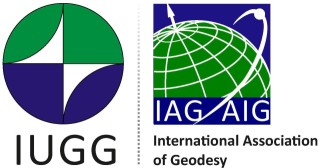The new gravimetry laboratory at Chalmers University of Technology, Onsala Space Observatory, has been operating since June 2009 when GWR SG 054 was installed. The first AG campaign took place in July 2009, followed by on average one to two campaigns every year. The main interest in the Fennoscandian area relates to Glacial Isostatic Adjustment , the advantage to re-observe AG at OSO stemming from collocation with permanent GNSS and VLBI instrumentation. Not to forget the SG.; nor a broadband seismometer operated at OSO by Uppsala University.
Among the AG's that have observed at OSO are FG5-233 (Lantmäteriet, Gävle, Sweden), FG5(X)-220 (IfE Hannover) and GAIN (an atomic interferometer developed at Humboldt University Berlin).
This presentation will detail the problems, lessons and solutions that emerged.
- SG scale factor: Despite formally exceeding the confidence limits of individual campaigns, the long term average scale factor is well compatible with the one retrieved from one month of GAIN , the latter showing higher stability than the co-observing FG5X-220 in the presence of microseisms, at elevated levels at the occasion.
- SG time delay: Using the seismometer and an earthquake at an antipodal location, the time delay in the SG signal chain could be determined at 0.1 s precision (both use GPS time).
- AG drop noise: In an effort to reduce AG without the usual g-software model but rather using the SG and a model for its drift, and doing that at the drop level, we encountered a campaign with a highly skewed histogram; in microseismic noise, the broadband seismometer helped to bring the drop noise back to more a normal level. By the same token, the time-stamping errors of the AG could be determined (now we provide a time service over a private network).
- When all drops (203,000) are combined in a multi-campaign analysis and reduced with simultaneous (and low-pass filtered) SG data, the formal uncertainty range for the drift model is found at the nm/s2 level. However, the rate of change of g is determined at a value that exceeds the one inferred from GNSS and plausible ratios for with significance. Finding the reasons for this discrepancy will keep us busy.
- Analysis of tides and nontidal perturbations has indicated a range of effects at work while others, in particular from ground water, seem to be benign at OSO thanks to careful siting and construction. A problem still awaiting consistent solution presents itself in the long-period domain where annual cycles and sub-cycles appear anomalous, and reconciliation escapes what models for neither global nor regional hydrosphere, atmosphere, and sea level could explain.
The presentation will highlight a subset of the items above, what items in particular can be resolved on the fly. Finally I shall acknowledge the co-operators for supporting and promoting this work.
- Other

 PDF version
PDF version
